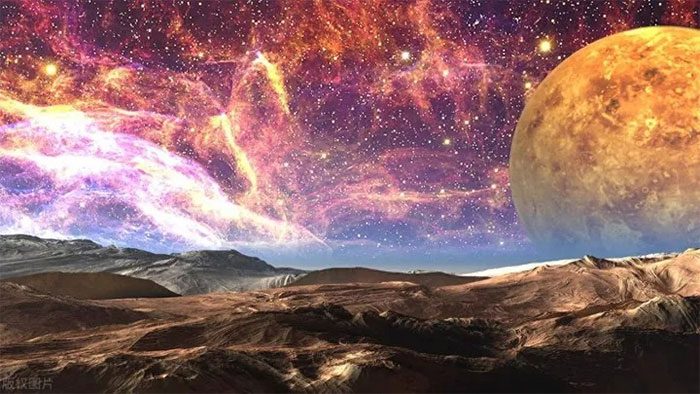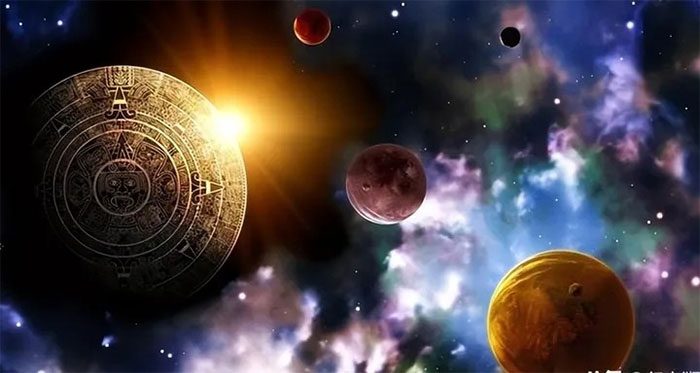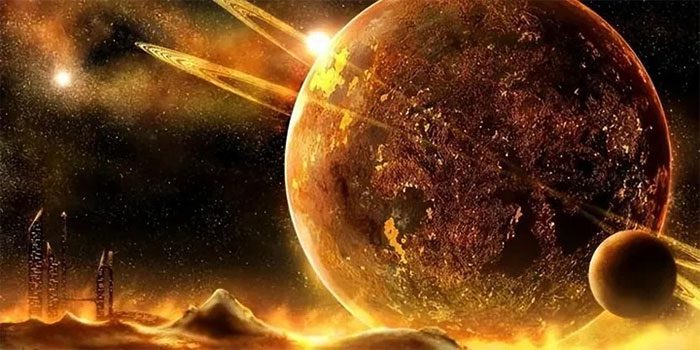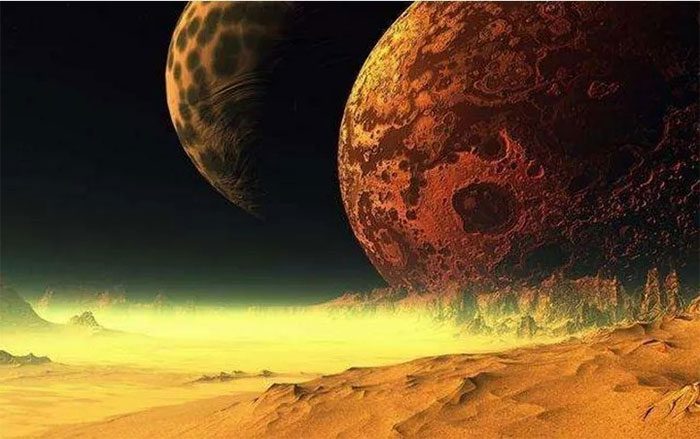In the vast universe, countless mysterious planets are hidden away, each holding endless secrets and unresolved enigmas. However, there is one particularly eye-catching planet that scientists have hailed as the “Golden Miracle” – a mysterious planet made entirely of gold.
The Composition of the Mysterious Planet
Gold has always been a treasure in the hearts of many, with an unparalleled allure. But what would you think if you learned that there is a truly mysterious planet made of gold?
In the universe, gold does not only exist on Earth; its formation requires extremely special conditions. According to research by scientists, the production of gold is primarily associated with supernova explosions. During the explosion of a star, the high-pressure and high-temperature environment can cause iron and nickel to merge, forming a gigantic core.

This special planet was first discovered in 1852 and observed with the telescopes of the time. Astronomers at that time named it 16 Psyche. (Photo: Zhihu).
When this gigantic core collapses, it releases a massive amount of energy and collides with particles to create gold. The presence of a large amount of gold on this planet indicates that it must have undergone a supernova explosion during its formation.
The vast gold regions will become a treasure for humanity to exploit, not only meeting the gold demand on Earth but also allowing scientists to delve deeper into the properties and characteristics of gold.
Besides its rich natural resources, this mysterious planet may also bring about other wonderful things. Due to the density and conductivity of gold, there may be a special energy source governed by gold within the planet, which could address the energy shortage on Earth.

It is estimated that the diameter of 16 Psyche is about 210 km and its mass could reach 272 million tons – estimated to be worth around 10 trillion USD, equivalent to over 10,000 times the value of the entire global economy. (Photo: Zhihu).
Imagine a mysterious planet with gold as its main component; it would bring countless surprises and unknowns to humanity. Whether for further scientific research or addressing energy issues, this planet is a valuable asset.
The Mechanism of Formation of Mysterious Planets
There are countless planets in the universe, and they exist in many different forms. How some of these planets are formed remains a mystery. There is a common view that the formation of these mysterious planets may be related to collisions between stars.
What are collisions between stars? Collisions between stars refer to the phenomenon of two stars colliding in space. Such collisions typically occur under the immense influence of interstellar space. During this process, the material between the stars will be exchanged and even merged. This provides a feasible way for new planets to form.
In collisions between stars, a large amount of material clumps together to form a gigantic nebula. The material in these nebulae will gradually condense and form planets. However, this process of clumping is not smooth. Because the immense energy from stellar collisions will make the material very hot, this will have a certain effect on the formation of the planets.

Currently, humanity does not have any spacecraft or exploration equipment that has landed or systematically explored 16 Psyche. Therefore, scientists also have many speculations about the formation of 16 Psyche. (Photo: Zhihu).
During the formation of a planet, the material needs to condense into a solid through gradual cooling. This process takes quite a long time. However, if the materials related to stellar collisions are too hot, they will find it difficult to cool and condense. The process of planet formation may be delayed or interrupted. This may also explain why some planets are harder to form and more complex than others.
Collisions between stars can also significantly impact the composition of the planets. During the collision, material from the two objects will mix together and gradually form planets as they cool down. This can lead to the material composition of the new planet being different from the original planets.
Collisions between stars can also have important effects on the orbits of the planets. During the collision, the momentum between the stars will change and may cause the orbits of the stars to shift. This can make the orbit of a planet relatively unstable, causing its position in the universe to change flexibly. This also provides a possible explanation for the existence of mysterious planets. The instability in its orbit may cause this planet to move erratically in the universe, significantly reducing the chances of detection.

Just imagine, one day in the future, when humanity’s technological level has advanced to a certain extent, we may be able to exploit gold mines on 16 Psyche. The minerals extracted and brought back to Earth could lead to gold on Earth gradually depreciating, making it as common as other ordinary metals. (Photo: Zhihu).
Collisions between stars may be a crucial mechanism in the formation of mysterious planets. The exchange of energy and material resulting from collisions provides the opportunity for planets to form. However, due to the high temperatures and momentum changes related to the collision, the formation of planets can be disrupted and lead to specific characteristics in their composition and orbits. We need to study and observe more deeply to gain a better understanding of the formation mechanisms of these mysterious planets.





















































